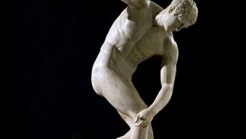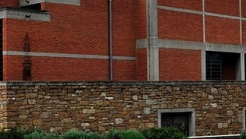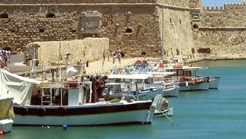

Greece
The Archanes Arachaeolgical Collection was inaugurated on August 21 1993, in the centre of the Archanes town, on the Tzami district.The exhibits are laid out in chronological order.
The Archanes Arachaeolgical Collection was inaugurated on August 21 1993, in the centre of the Archanes town, on the Tzami district.
The museum’s small building, a neoclassic building, was the first public school of the town, which operated until the 1920’s
The exhibits are laid out in chronological order. The first findings are of prehistoric times, from the Fourni cemetery.
The most important exhibit, are probably the various types of clay sarcophagi, even a child’s, and the tombal pithoi, as found with the bones of the deceased in reduced position, not only because a Cretan museum forms an idea on the burial of the dead, but because of the way of their underground exhibition.
Immediately after that, thre are ceramic exhibits from various burial buildings in Fourni, in a variety of shapes.
The ceramic exhibits, also contain 3 pithoi from the temple’s central room. There are also : a mold of the achates stamp the priest wore, and a copy of the copper weapon that was used for sacrifices, bearing an animal headed emblem on both sides.


The aim of the exhibition is not only to provide info on the games in ancient times, but also to initiate the visitor in what the Olympics were.


The Thessaloniki Museum of Byzantine civilization presents various aspects of life during the byzantine and metabyzantine period: Art, ideology, social organization and religion.


Heraklion is not just a city in the next visitor’s destination. Expresses something more, something deeper, a history of thousands of years. With this thought must learn the traveler to "read" the area beyond the mundane habits that require a visit to museums or at Knossos.
1039 Ε 6061 01515 00